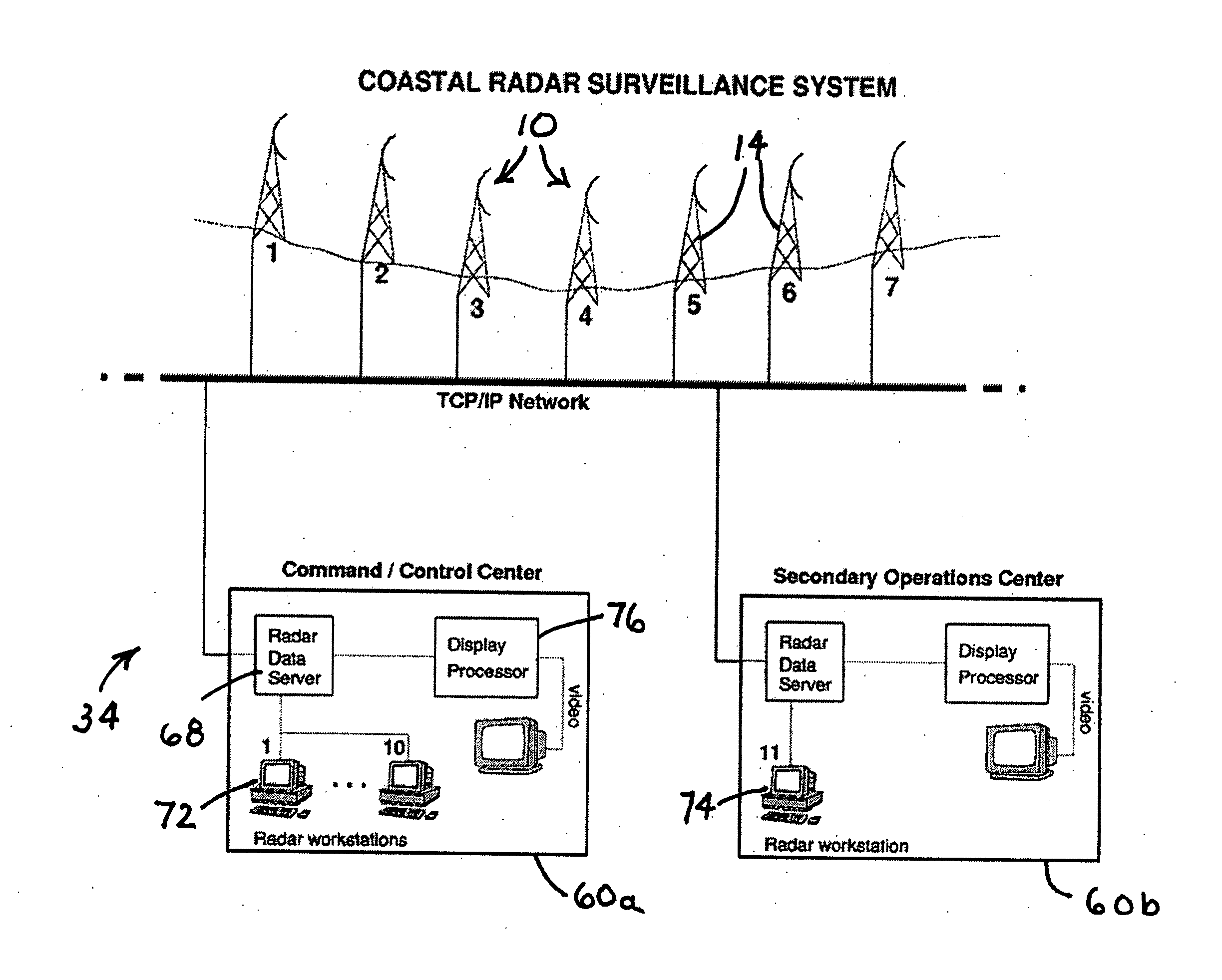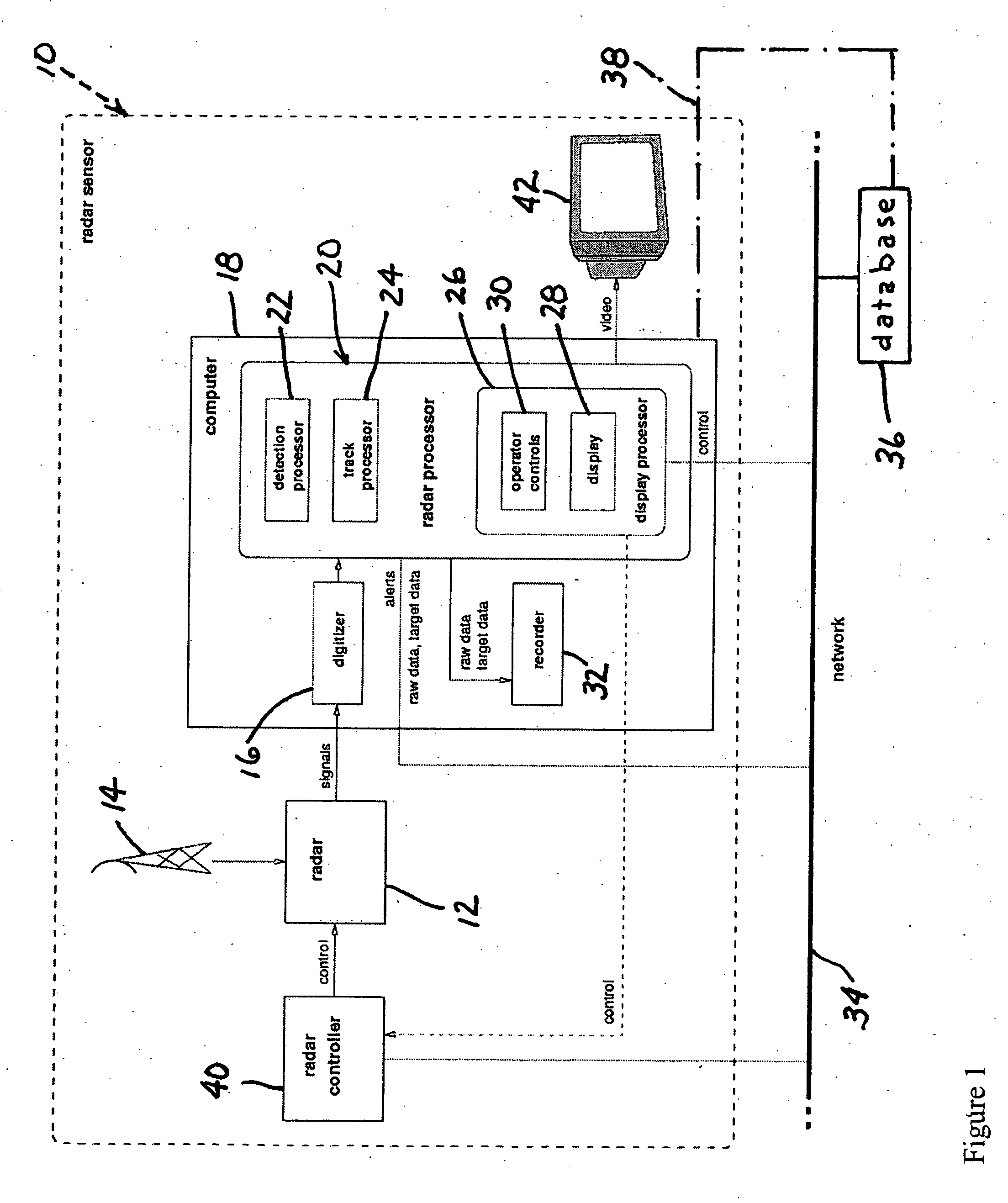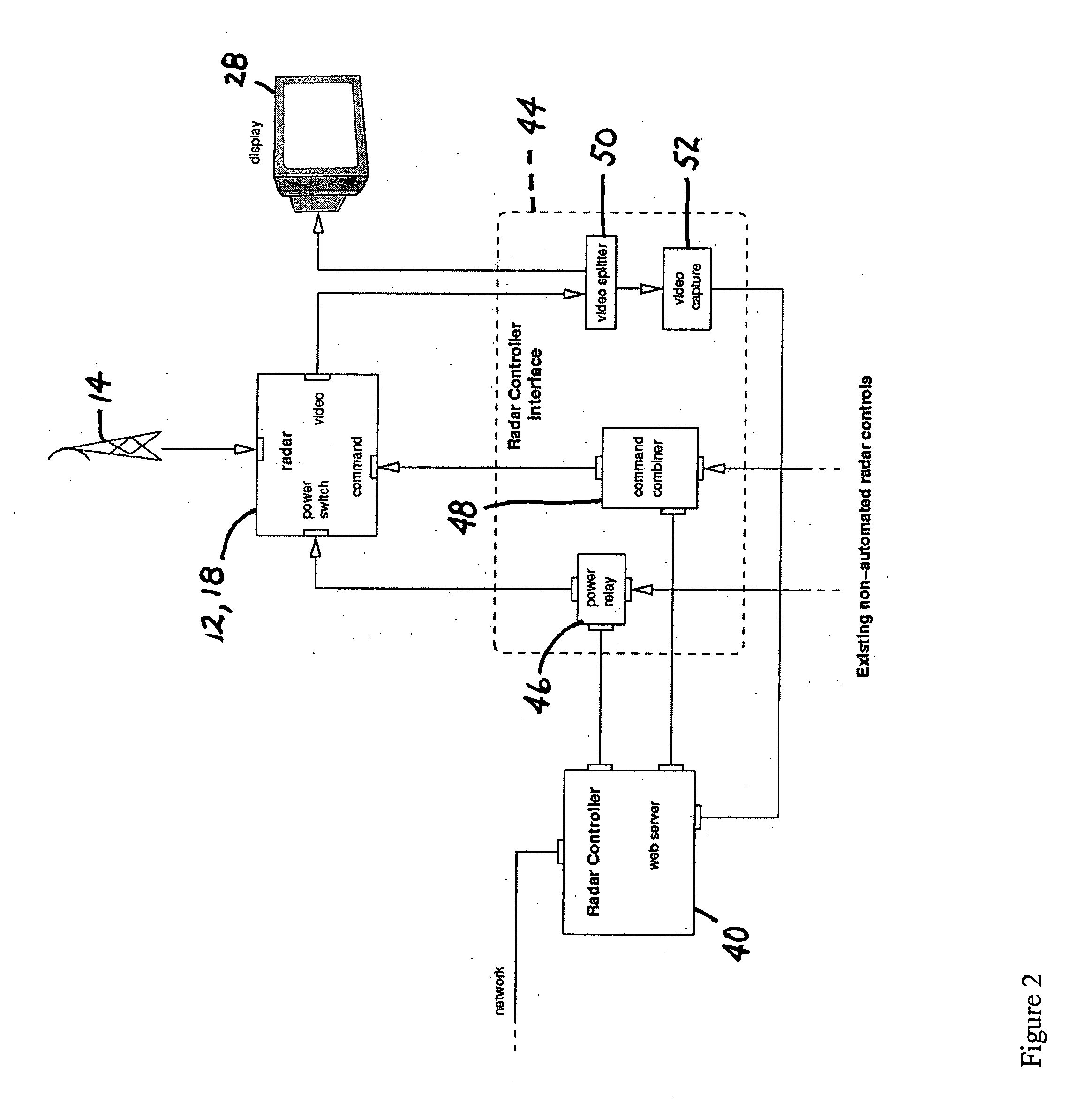Low-cost, high-performance radar networks
a radar network and low-cost technology, applied in the field of land-based radar surveillance, can solve the problems of insufficient tracking circuits included with these radars, mediocre radar performance, and further complicating matters, so as to improve tracking performance, improve tracking quality, and improve the effect of human effor
- Summary
- Abstract
- Description
- Claims
- Application Information
AI Technical Summary
Benefits of technology
Problems solved by technology
Method used
Image
Examples
Embodiment Construction
[0046] A block diagram of a radar sensor apparatus 10 in accordance with the present invention is shown in FIG. 1. Characteristics of each block are as follows. The radar sensor apparatus 10 includes a radar device 12 that is typically noncoherent and transmits pulses of constant width at a constant pulse repetition frequency (PRF) at X-band or S-Band. Radar device 12 typically has either a continuously rotating or sector scanning antenna 14. Antenna 14 is elevated to be several meters above the area to be monitored, and has a detection range of several kilometers. COTS marine radars typically have these characteristics and are preferred for the present invention due to their availability, low-cost, and good antenna and transceiver characteristics. Radar device 12 takes the form of a marine radar. A typical marine radar is noncoherent, transmits at X-band with 50 kW peak power, pulse repetition frequency (PRF) between 1 and 2 kHz and with pulse width between 0.1 and 1 μs. It has a 2...
PUM
 Login to View More
Login to View More Abstract
Description
Claims
Application Information
 Login to View More
Login to View More - R&D
- Intellectual Property
- Life Sciences
- Materials
- Tech Scout
- Unparalleled Data Quality
- Higher Quality Content
- 60% Fewer Hallucinations
Browse by: Latest US Patents, China's latest patents, Technical Efficacy Thesaurus, Application Domain, Technology Topic, Popular Technical Reports.
© 2025 PatSnap. All rights reserved.Legal|Privacy policy|Modern Slavery Act Transparency Statement|Sitemap|About US| Contact US: help@patsnap.com



